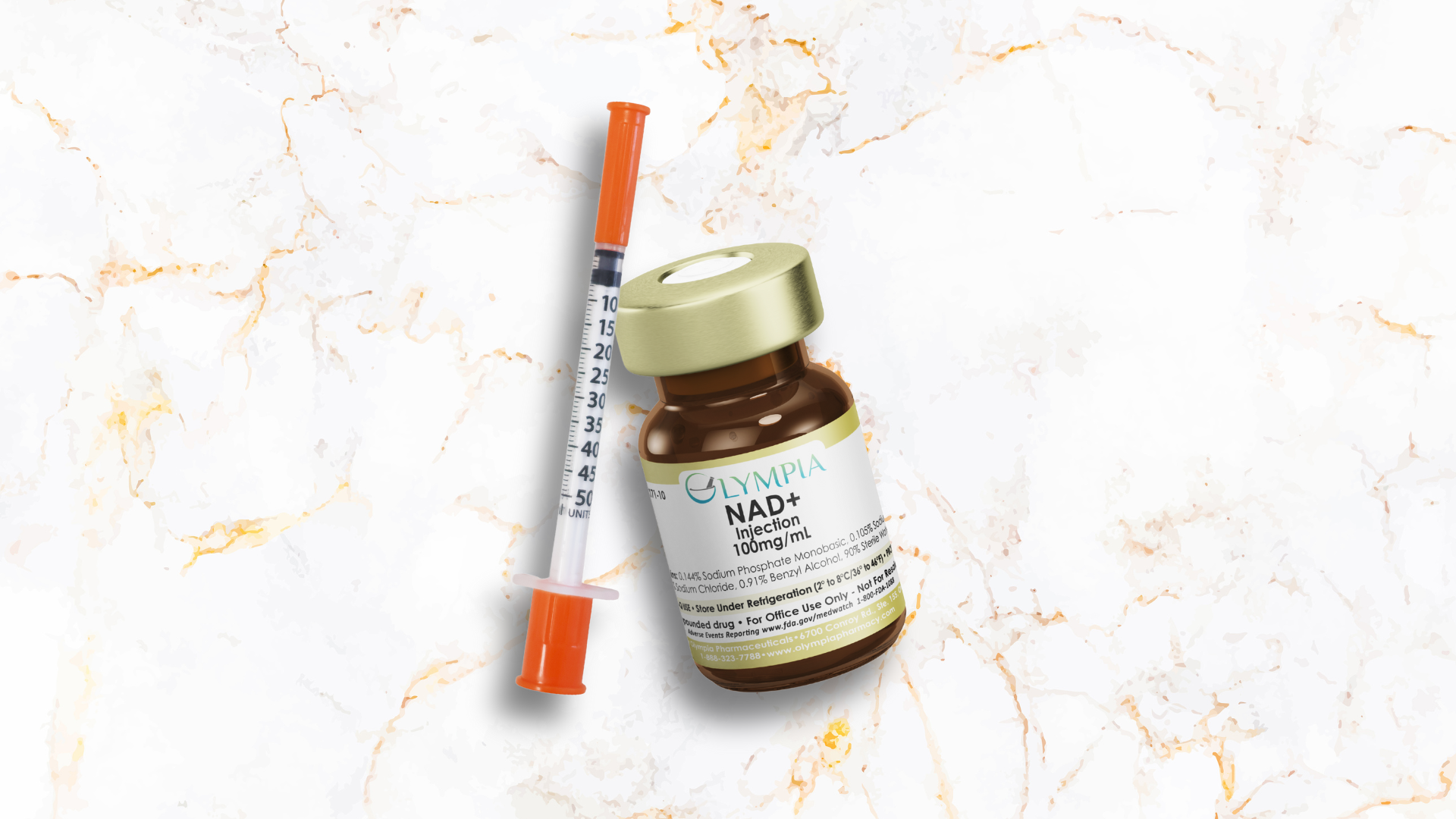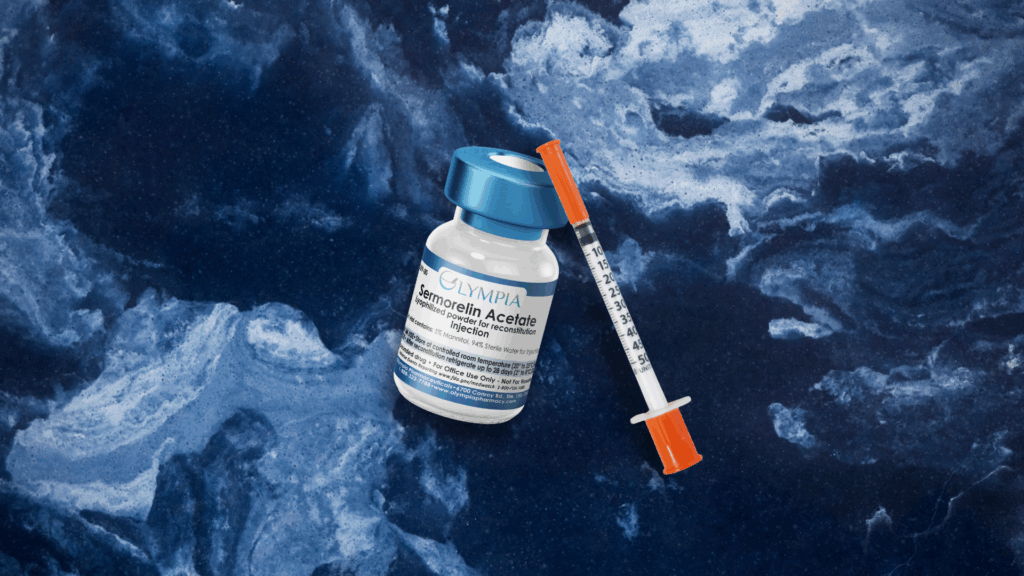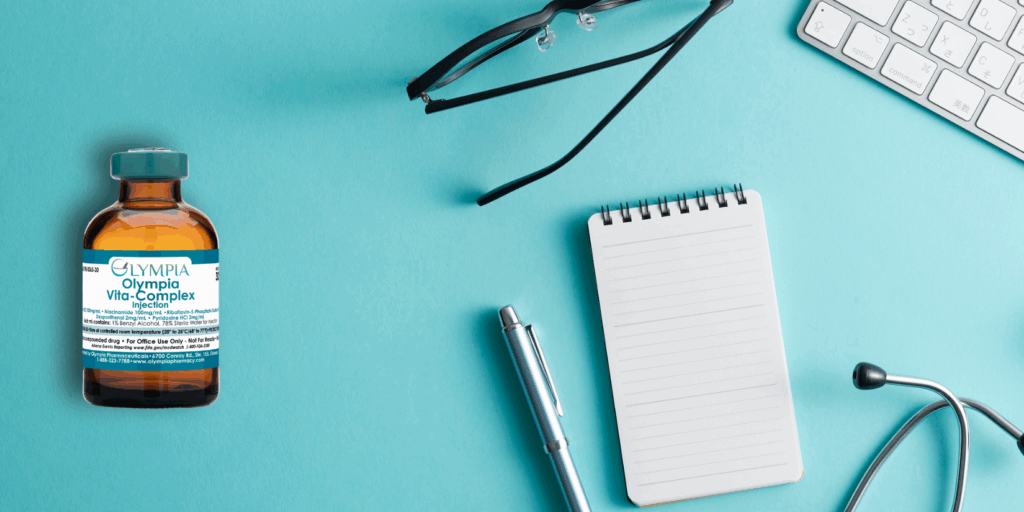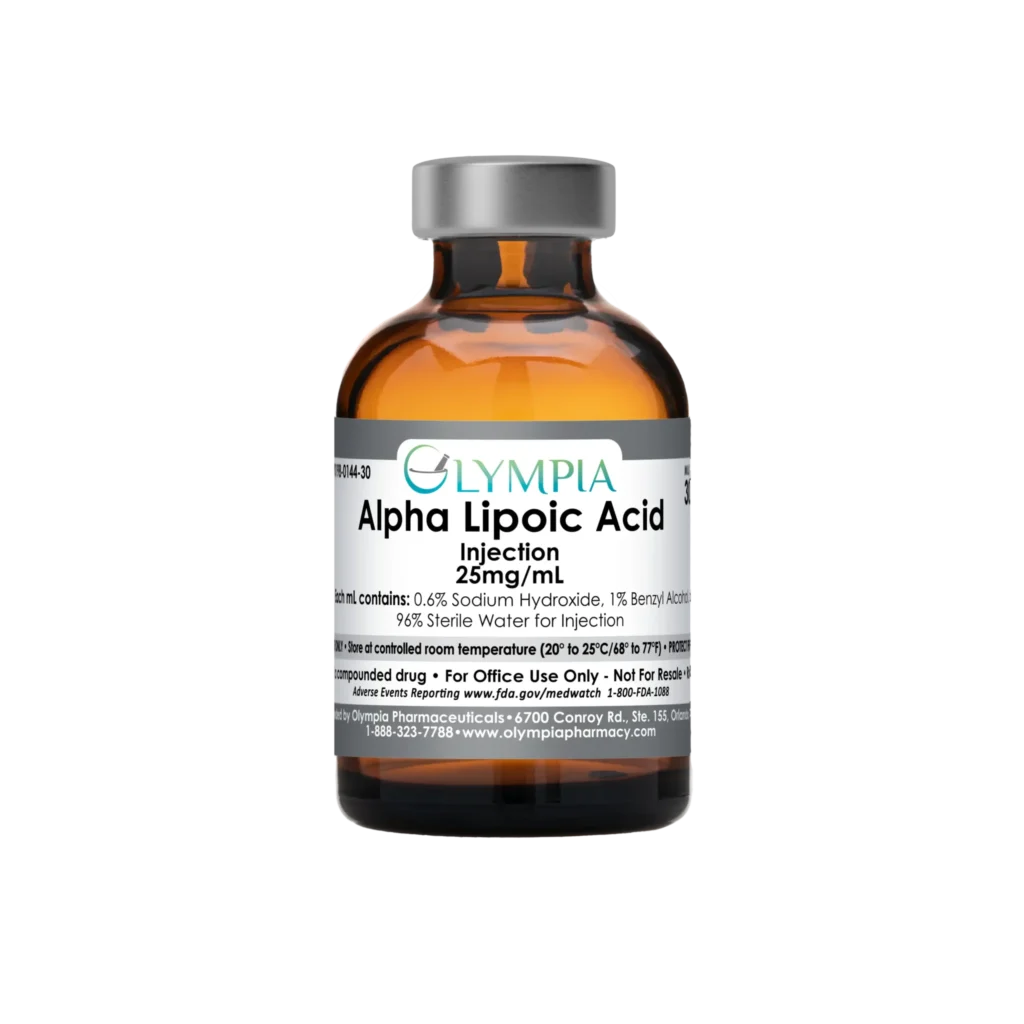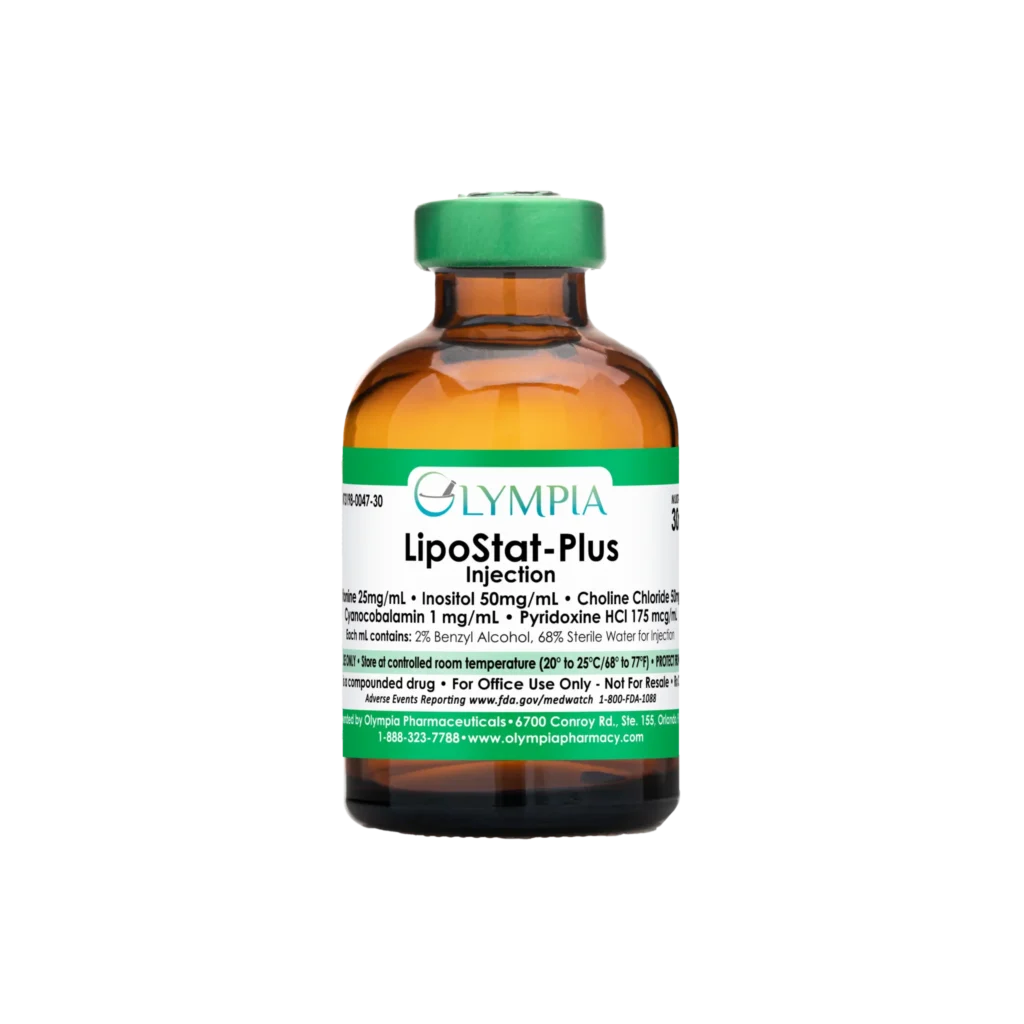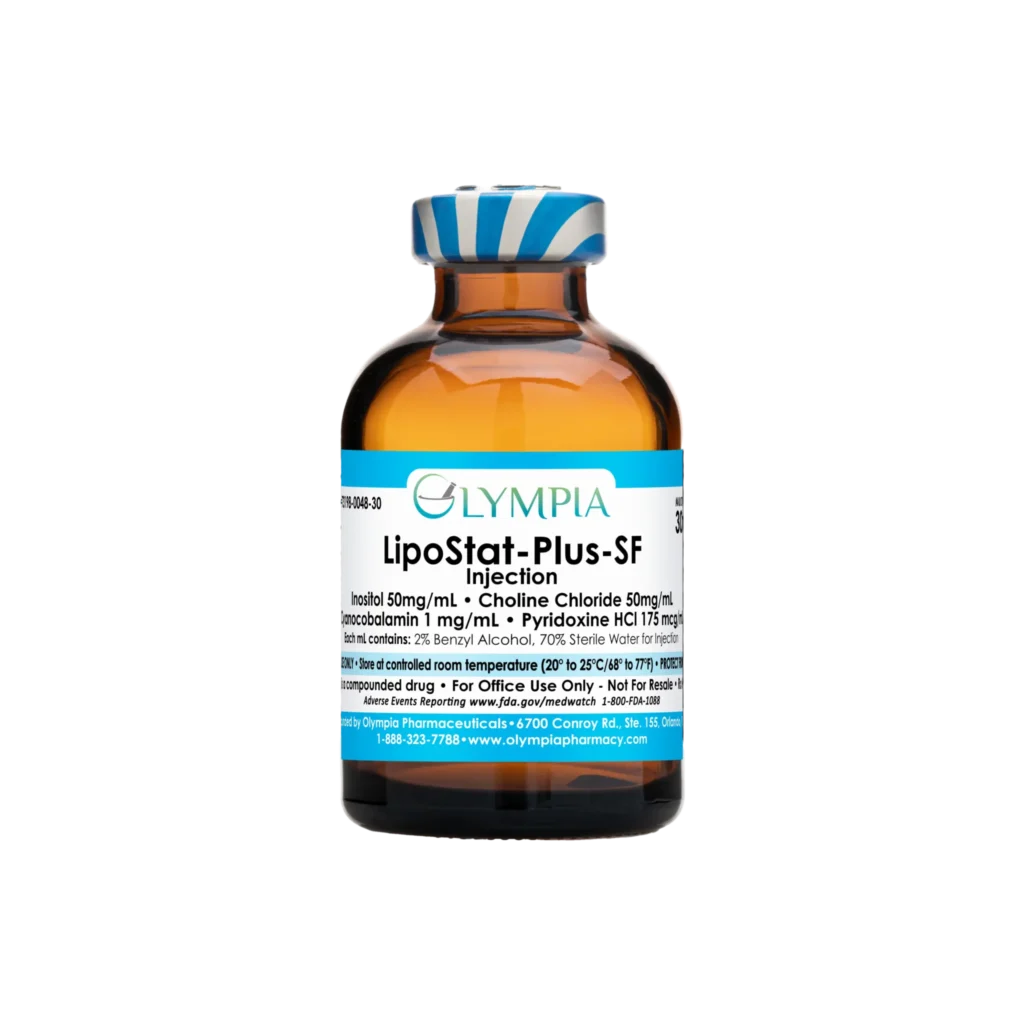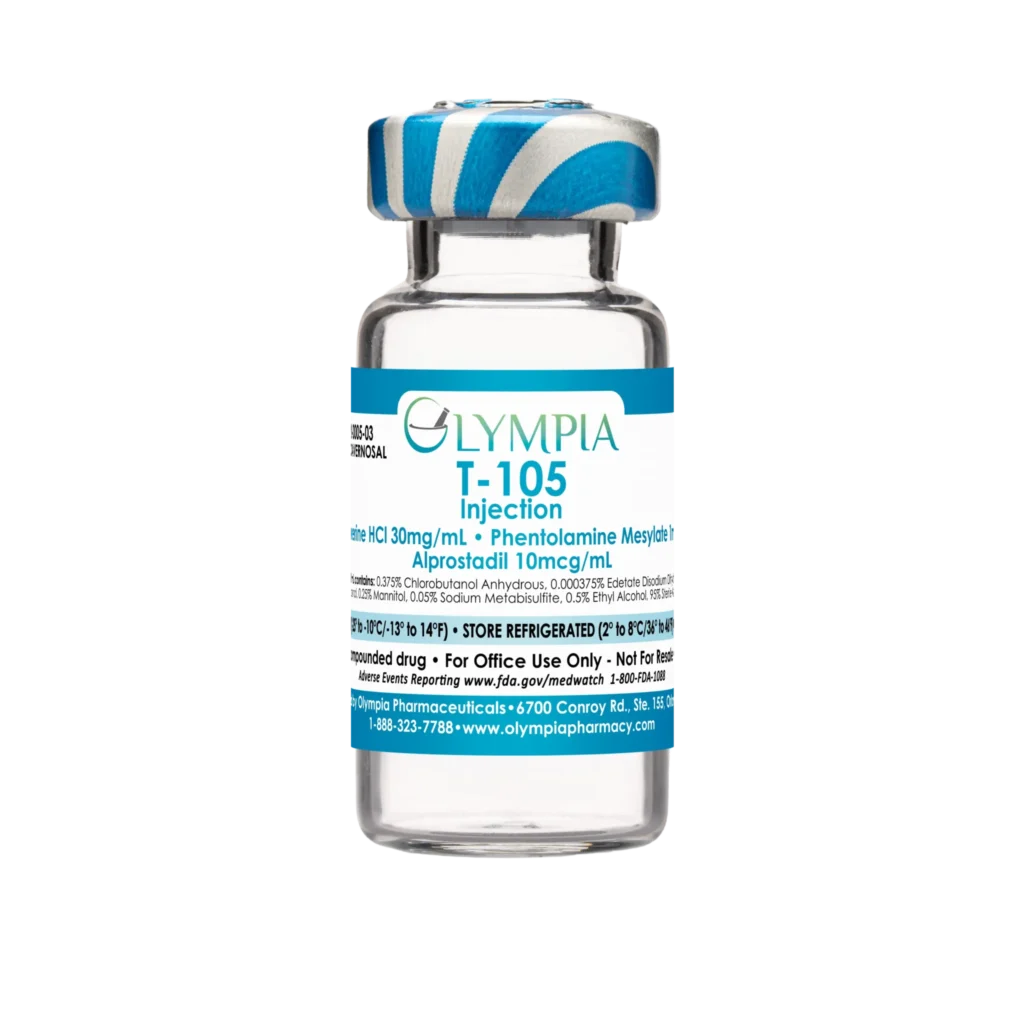NAD+ Injections are a coenzyme found in all cells. Interest in NAD+ injection protocols has grown as clinicians develop wellness and longevity programs for their patients. Based on patient needs, NAD+ may be prescribed for intravenous (IV), intramuscular (IM), or subcutaneous (SubQ) administration. Below you’ll find a full NAD dosage chart and a walkthrough of NAD dosage per day, depending on how it’s administered.
Important: NAD+ dosing is individualized and will vary depending on patient needs. Use this chart as an educational overview and follow the plan created with your licensed healthcare professional. This chart, and this blog, are for informational purposes only, and not intended to substitute or replace medical advice.
Quick NAD+ Dosage Chart (IV, IM, SubQ)
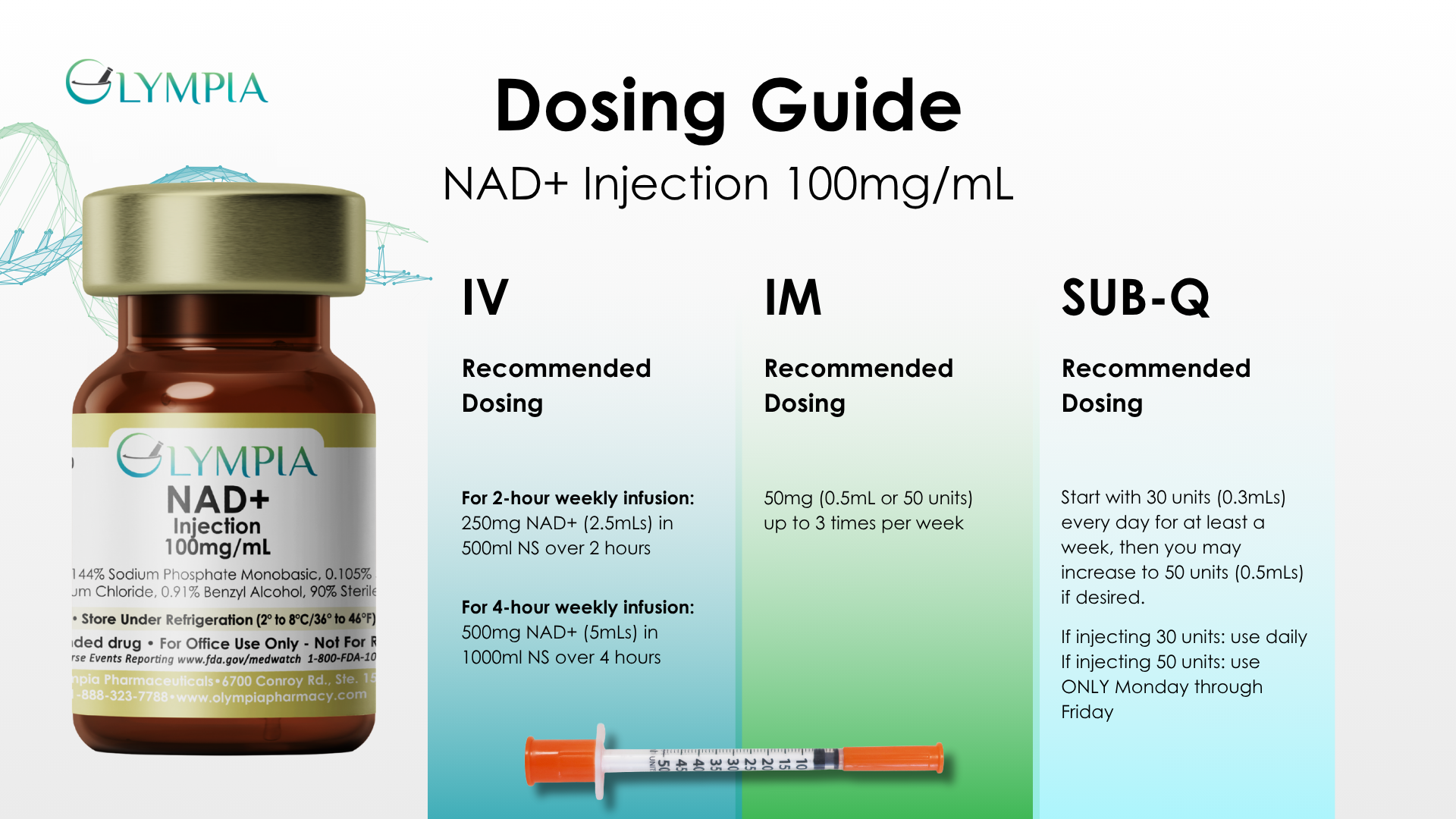
Concentration:
100 mg/mL (NAD+ Injection)
| Route | Starting / Typical Dose | Frequency | Notes |
|---|---|---|---|
| IV infusion | 250 mg (2.5 mL) in 500 mL NS over 2 hours | Weekly | |
| IV infusion | 500 mg (5 mL) in 1000 mL NS over 4 hours | Weekly | Extended infusion time for patient monitoring |
| IM injection | 50 mg (0.5 mL or 50 units) | Up to 3×/week | Per clinical direction, this will be spaced out across the week. |
| SubQ Injection | Start 30 units (0.3 mL) daily for ≥1 week | Daily | If desired after the first week, increase to 50 units (0.5 mL) from Monday–Friday only. |
[button url=”https://www.olympiapharmacy.com/contact/” new-tab]Ready for NAD+?[/button]
NAD Dosage Per Day: What That Looks Like
Because the IV and IM plans are weekly, “per day” typically applies to the SubQ route of administration:
- Start: 30 units daily for at least one week.
- With 100 mg/mL, 0.3 mL = 30 mg (because 100 mg × 0.3 mL = 30 mg).
- Over 7 days, that’s 30 mg/day × 7 = 210 mg/week.
- Then (if desired): 50 units Monday-Friday only.
- With 100 mg/mL, 0.5 mL = 50 mg (100 mg × 0.5 mL = 50 mg).
- Over the workweek, that’s 50 mg/day × 5 = 250 mg/week (with weekends off).
For context (weekly totals):
- IM up to 3×/week: 50 mg × 3 = 150 mg/week.
- IV (weekly): 250 mg/week or 500 mg/week, depending on the infusion length/volume.
Your prescriber may keep you at the initial daily SubQ level longer or step you up, depending on your goals and how you feel during and after administrations.
How to Read the Chart: mL, “Units,” and mg
- The guide lists “units” alongside mL for syringe readability (e.g., 50 units = 0.5 mL, 30 units = 0.3 mL).
- With 100 mg/mL, you can convert volume to dose quickly:
- 0.3 mL → 30 mg
- 0.5 mL → 50 mg
- 2.5 mL → 250 mg
- 5 mL → 500 mg
Choosing a Route (IV vs IM vs SubQ)
- IV is often selected for structured sessions in clinic settings.
- IM up to 3×/week provides less frequent, moderate dosing.
- SubQ daily enables smaller, more frequent amounts with the ability to increase after the first week, depending on clinical direction.
- Check our guide on how to give a SubQ injection
Your clinician will consider your schedule, tolerance during and after administration, and your program goals when recommending route and frequency.
Storage & Handling Notes
- Olympia’s compounded NAD+ injection is a liquid formula, and should be stored under refrigeration. Protect from light.
- Always read the label of your medication prior to administering an injection.
This content is for educational purposes only and is not a substitute for advice from a licensed medical provider. The information here has been written in reference to Olympia’s NAD+ 100mg/mL injection only. Content written here should not be applied to other compounded injections of NAD+. All compounded formulations are prepared by Olympia Pharmaceuticals under cGMP practices and with oversight by national and state pharmacy boards.
